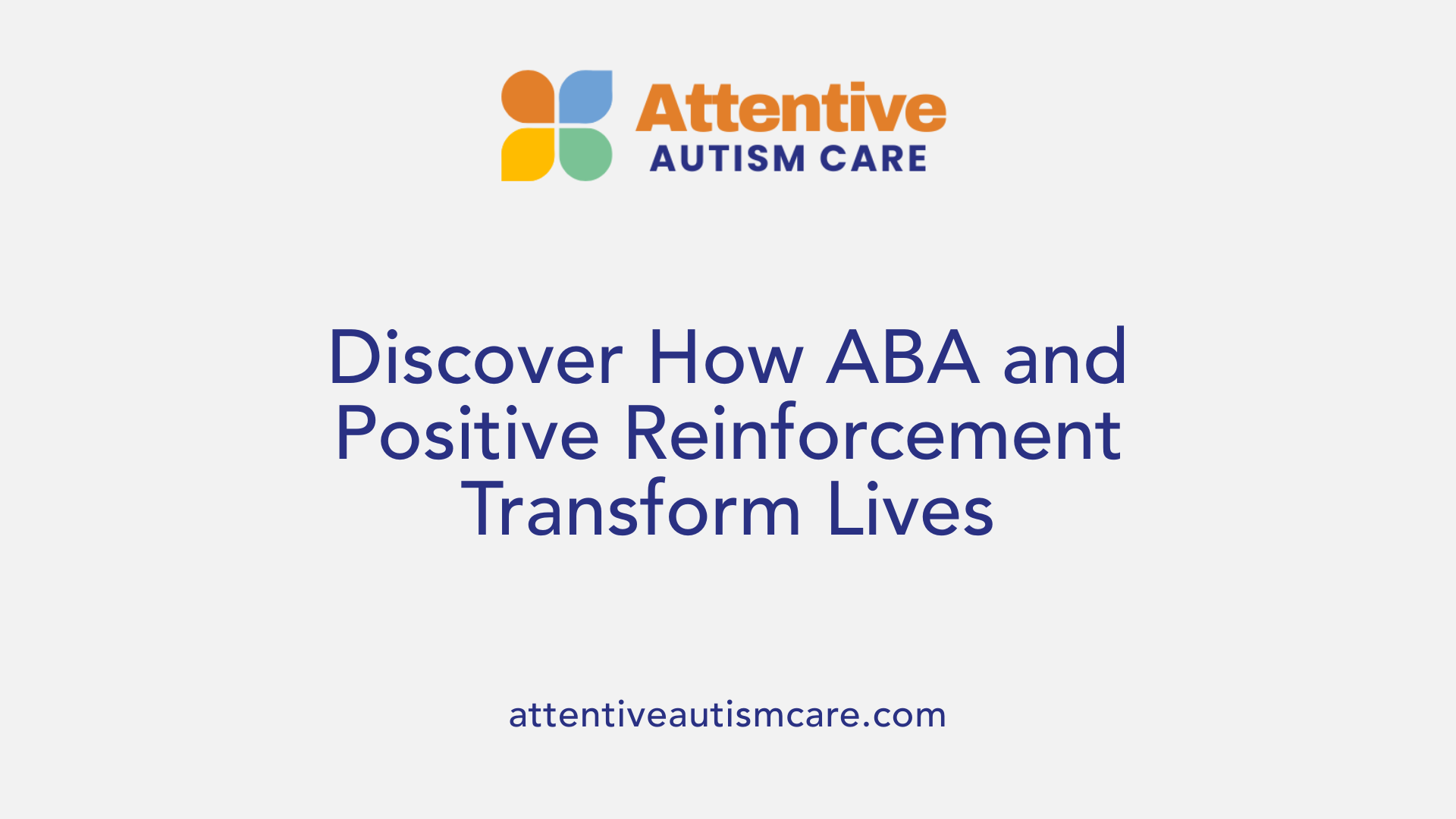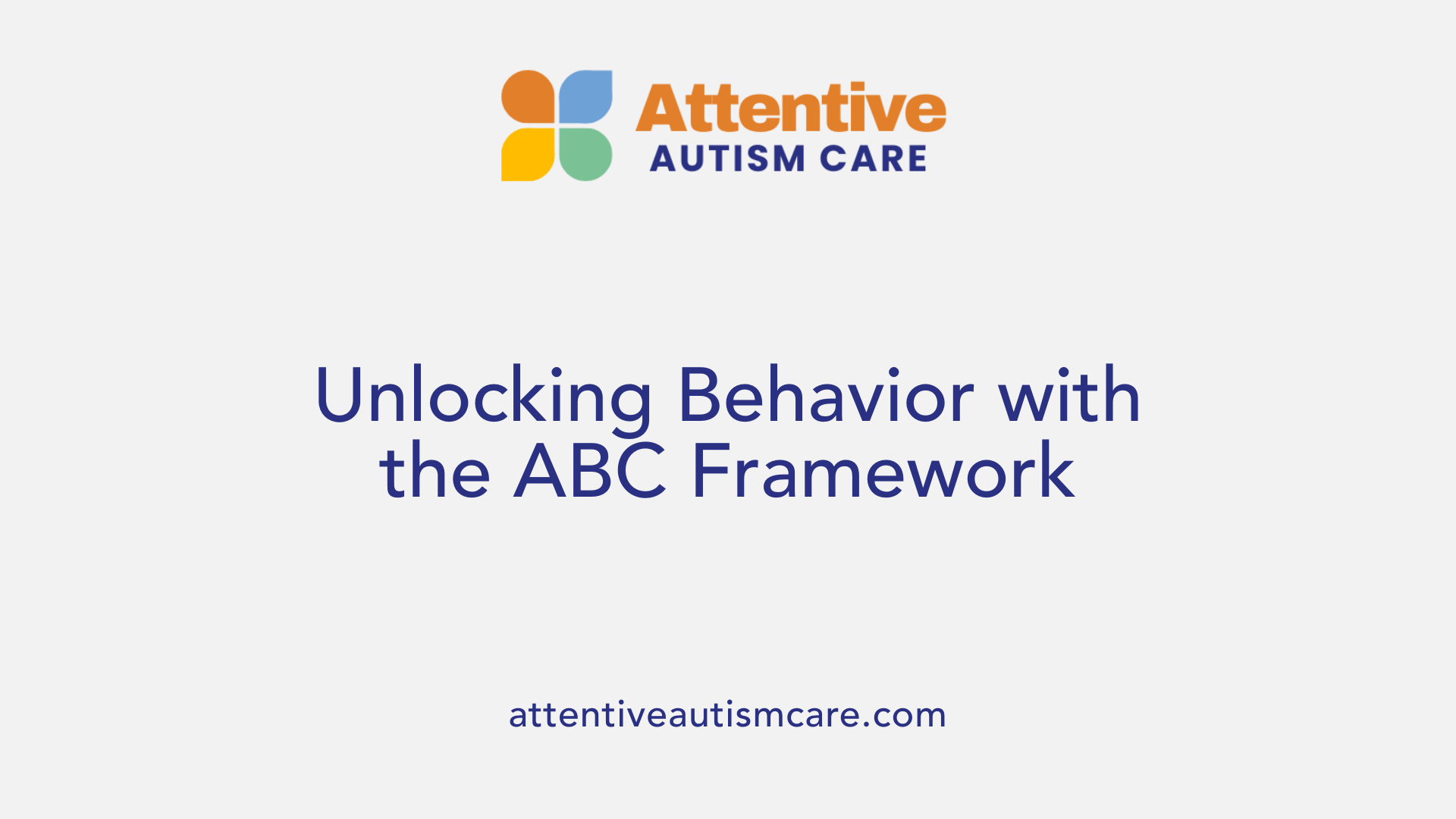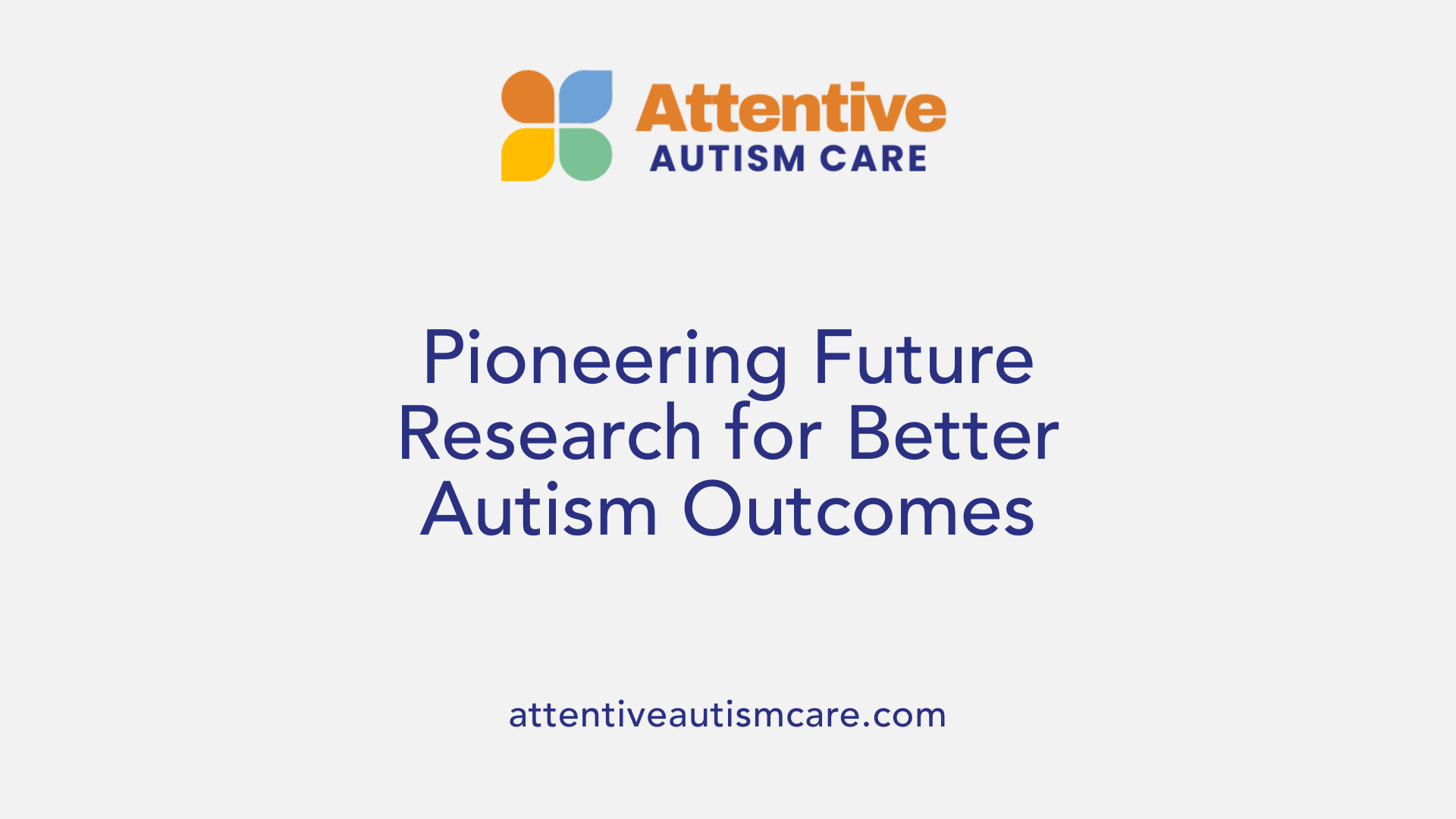How to Use Positive Reinforcement to Manage Autism Behavior
Harnessing Positive Reinforcement: Effective Behavior Management in Autism

Understanding Positive Reinforcement within ABA Therapy
Applied Behavior Analysis (ABA) is a scientifically grounded approach widely used to support individuals with autism spectrum disorder (ASD). Central to ABA therapy is the concept of positive reinforcement, a technique that encourages desirable behaviors by following them with rewarding outcomes. This article explores how positive reinforcement functions within ABA to manage behaviors, teaching new skills, and improving life quality for autistic individuals through evidence-based strategies tailored to their unique needs.
What is Applied Behavior Analysis (ABA) Therapy?
Definition of ABA therapy
Applied Behavior Analysis (ABA) therapy is a science-based approach focused on improving helpful behaviors and reducing harmful ones, especially in individuals with autism spectrum disorder (ASD). It helps learners develop a variety of skills including communication, social interaction, self-care, motor abilities, and academics.
Scientific basis and principles
ABA is grounded in learning theory, particularly operant conditioning developed by B.F. Skinner. It studies how behavior is influenced by environmental factors and consequences, using reinforcement to increase desired behaviors. Reinforcement can be positive (adding rewards) or negative (removing unpleasant stimuli), aimed at encouraging behavioral change.
Individualized treatment approach
Treatment programs in ABA are customized to the unique needs of each individual. Qualified behavior analysts (BCBAs) conduct detailed assessments to establish meaningful, person-specific goals. Ongoing data collection allows continuous monitoring and adjustment of the therapy plan.
Use of operant conditioning and learning theory
ABA therapists analyze the antecedents (what triggers behavior), the behavior itself, and the consequences (rewards or consequences) — the ABC model — to understand and modify behavior effectively. This approach ensures teaching methods are data-driven and contextually relevant.
Core techniques and ABC model
Key techniques include discrete trial training (breaking skills into steps), modeling (demonstrating behaviors), prompting and fading (guiding responses then gradually reducing help), visual modeling, and behavior contracts. These tools help learners acquire new skills and reduce problematic behaviors systematically.
Tailored goals and data-driven decisions
ABA therapy is goal-oriented with treatment goals set carefully based on comprehensive assessments. Progress is measured continuously, enabling therapists to refine interventions and maximize behavioral improvements.
Recognition as evidence-based practice
ABA is recognized as an evidence-based best practice by the U.S. Surgeon General and the American Psychological Association. Long-term intensive ABA therapy has been shown to improve intellectual abilities, language, social skills, and daily functioning in individuals with autism.
| Aspect | Description | Additional Detail |
|---|---|---|
| Scientific Basis | Operant conditioning and learning theory | Reinforcement and ABC (Antecedent-Behavior-Consequence) analysis |
| Treatment Approach | Individualized, data-driven, and goal-oriented | Assessed and delivered by Board Certified Behavior Analysts (BCBAs) |
| Core Techniques | Discrete trial training, modeling, prompting, behavior contracts | Tailored to each learner’s needs and progress |
| Evidence Base | Supported by US Surgeon General and APA | Studies confirm improvements in language, cognitive and social skills |
The Role of Positive Reinforcement in ABA Therapy
What is Positive Reinforcement?
Positive reinforcement is a behavioral strategy used in Applied Behavior Analysis (ABA) therapy that involves following a specific behavior with a rewarding outcome to encourage that behavior to occur again. It works by adding a desirable stimulus immediately after the behavior, making the behavior more likely to be repeated in the future.
How Does Positive Reinforcement Relate to Operant Conditioning?
Positive reinforcement is grounded in B.F. Skinner's theory of operant conditioning, which explains how behavior can be shaped and maintained by its consequences. In ABA, therapists leverage this principle to modify behaviors by controlling what happens after the behavior—specifically by providing rewards that increase the chance of the behavior happening again.
How Do Rewards Increase Desired Behaviors?
When a behavior is followed by a positive reinforcer, such as praise, tokens, or preferred activities, the individual learns to associate that behavior with positive outcomes. This association motivates the person to repeat the behavior, fostering skill acquisition and more adaptive behaviors.
What Types of Reinforcement Exist?
ABA therapy uses both positive and negative reinforcement. Positive reinforcement adds a pleasant stimulus to increase a behavior, while negative reinforcement involves removing an aversive stimulus after the behavior to encourage it. Both methods aim to strengthen desired behaviors but differ on how the reinforcement is applied.
What are Primary and Secondary Reinforcers?
Primary reinforcers satisfy basic needs or desires, such as food or drink, and are naturally reinforcing. Secondary reinforcers are learned, such as praise, tokens, or stickers, which gain reinforcing power through association with primary reinforcers.
Why Are Immediacy and Contingency Important?
For reinforcement to be effective, it must be delivered immediately after the targeted behavior, ensuring the individual connects the reward with the correct action. Contingent reinforcement means that the reward depends directly on the occurrence of the behavior. Non-contingent rewards, not tied to behavior, tend to be less effective.
How Are Reinforcement Strategies Monitored and Adjusted?
ABA therapists continuously assess how an individual responds to different reinforcers and adjust the approach accordingly. This ongoing monitoring ensures the reinforcement remains motivating and effective, helping to promote lasting behavioral improvements.
Key ABA Methods Utilizing Positive Reinforcement for Autism

What methods are commonly used in ABA therapy?
Applied Behavior Analysis (ABA) therapy uses several structured methods to teach skills and modify behaviors, particularly in children with autism. One foundational method is Discrete Trial Training (DTT), which breaks down skills into small, manageable steps. Each trial offers clear instruction followed by prompts and immediate positive reinforcement, encouraging learning through consistent, repetitive practice.
Modeling and imitation are also frequently used, where therapists demonstrate desired behaviors for the individual to copy. This visual learning approach helps teach social and communication skills effectively.
Prompting and fading guide learners toward target behaviors using cues or aids, which are gradually reduced over time. This supports independence and mastery of new skills.
Another technique, behavior chaining, breaks multi-step tasks into smaller actions that are taught sequentially, helping learners complete complex behaviors through reinforcement at each step.
Behavior contracts are formal agreements outlining expected behaviors and associated rewards or consequences. They promote accountability and are often used to address challenging behaviors.
Visual methods such as visual modeling (charts, videos, pictures) and social stories help learners understand and generalize social situations and appropriate responses. These tools complement reinforcement by providing visual cues and narratives.
To reduce undesired behaviors, ABA employs extinction, where reinforcement for challenging behavior is withheld, leading to a decrease over time. Additionally, redirection immediately focuses attention away from problem behavior toward desirable alternatives.
All methods rely heavily on positive reinforcement, meaning that rewarding desired behavior increases its likelihood. Therapists continuously assess progress and adjust techniques to meet individual needs, ensuring effective and personalized intervention.
These strategies combine to create a dynamic and evidence-based approach to autism therapy, promoting meaningful skill development and behavior change.
Benefits of ABA and Positive Reinforcement for Individuals with Autism

How does ABA therapy benefit individuals with autism?
Applied Behavior Analysis (ABA) therapy offers a scientifically grounded approach to improving behaviors in individuals with autism. By increasing helpful behaviors and reducing challenging ones, ABA supports skill development across multiple areas vital to everyday functioning.
Skill Development (communication, social, self-care)
ABA programs are tailored to each individual's needs and emphasize building skills such as communication, social interaction, and self-care. Techniques like positive reinforcement and discrete trial training encourage acquiring language and social skills while supporting personal care abilities necessary for independence.
Reduction of Challenging Behaviors
Using detailed assessments and strategies based on the antecedent-behavior-consequence (ABC) model, ABA helps identify triggers and consequences of behavior. Reinforcement techniques promote desirable behaviors while reducing harmful or interfering behaviors, leading to improved behavioral management.
Increased Independence and Social Engagement
ABA supports learners in gaining autonomy by teaching functional daily living skills and social skills. Programs such as Pivotal Response Treatment encourage motivation and self-management, which enhance social participation and community integration.
Early Intensive Intervention Outcomes
Early intensive behavioral interventions involving 20 to 40 hours a week for several years can substantially improve intellectual functioning, language development, and social behaviors. Early start programs tailored for young children have demonstrated meaningful progress in cognition and adaptive behaviors.
Improvements in Cognitive and Adaptive Functioning
Studies show that consistent ABA therapy enhances cognitive skills, daily living abilities, and adaptive functioning. This leads to better memory, problem-solving, and capability to manage everyday tasks independently.
Enhancement of Emotional Regulation and Focus
ABA’s reinforcement strategies and structured supports help individuals regulate emotions and maintain attention. This fosters improved focus during learning sessions and contributes to emotional stability beyond therapy settings.
The benefits of ABA therapy, combined with the effective application of positive reinforcement, contribute to meaningful enhancements in quality of life by promoting autonomy, communication, social relationships, emotional well-being, and learning capacity for individuals with autism.
The ABC Model: Understanding and Modifying Behavior

What are antecedents, behaviors, and consequences in ABA?
The ABC model is a foundational concept in Applied Behavior Analysis (ABA) that breaks down behavior into three components:
- Antecedents: Events or triggers that occur right before a behavior.
- Behaviors: The observable actions or responses themselves.
- Consequences: What happens immediately after the behavior that influences its future occurrence.
This framework helps therapists understand and predict behaviors by examining what leads up to them and what follows.
How does ABA analyze behavior using the ABC model?
ABA practitioners carefully observe and record the antecedents and consequences surrounding a behavior. This detailed analysis helps identify patterns, such as which antecedents trigger a behavior and which consequences reinforce or discourage it. By understanding these relationships, therapists can develop strategies to encourage positive behaviors and reduce problematic ones.
How are antecedents and consequences manipulated in ABA?
Therapists modify antecedents by changing environmental cues or situations to prevent undesirable behaviors or encourage desirable ones. For example, altering a setting to reduce distractions can decrease off-task behavior. Consequences are manipulated primarily through reinforcement and extinction:
- Reinforcement: Providing rewards or removing unpleasant stimuli to increase a behavior's frequency.
- Extinction: Withholding reinforcement for unwanted behaviors to reduce their occurrence over time.
What role do reinforcement and extinction play?
Reinforcement, both positive (adding rewards) and negative (removing aversive stimuli), strengthens desired behaviors. Extinction works by systematically not reinforcing problematic behaviors, leading to their decline. Together, these strategies are core to shaping behavior effectively.
How does data-driven decision-making fit into the ABC model?
Behavior analysts collect data on antecedents, behaviors, and consequences continuously. This empirical approach allows them to evaluate progress, adjust interventions, and ensure that behavioral changes are meaningful and durable.
Can you provide examples of the ABC model in real-life scenarios?
- Example 1: A child throws a tantrum (behavior) when asked to clean up toys (antecedent). If the parent immediately gives the child a treat to stop the tantrum (consequence), the tantrum may increase due to positive reinforcement.
- Example 2: A student calls out answers without raising their hand (behavior) after teacher directions (antecedent). If the teacher ignores the calling out (extinction) and praises hand-raising (reinforcement), the student learns to raise their hand.
Understanding and applying the ABC model enables ABA therapists to craft individualized and effective intervention plans.
| ABC Component | Description | Example |
|---|---|---|
| Antecedent | Triggers or cues before behavior | Teacher asking a question |
| Behavior | Observable action | Student raising hand |
| Consequence | Outcome following behavior | Praise and attention for raising hand |
Who Provides ABA Therapy? Qualifications and Roles
Board Certified Behavior Analysts (BCBAs)
ABA therapy is primarily provided by Board Certified Behavior Analysts (BCBAs), who are highly trained professionals specialized in behavior analysis. BCBAs hold at least a master's degree in applied behavior analysis or a related field. They complete between 1,500 and 2,000 hours of supervised practicum experience before passing a rigorous certification exam administered by the Behavior Analyst Certification Board (BACB). Their extensive education and fieldwork prepare them to conduct behavioral assessments, design personalized treatment plans, and evaluate progress using data-driven methods.
Training and Education Requirements
To qualify as a BCBA, candidates must complete graduate coursework aligned with BACB standards, including topics such as learning theory, measurement, and ethical considerations. Supervised fieldwork is an essential part of their training to gain practical experience. Registered Behavior Technicians (RBTs), who support therapy implementation, complete a competency-based training program and must be supervised by BCBAs.
Role of Registered Behavior Technicians (RBTs)
RBTs are vital members of the ABA team, delivering direct therapy to clients under the supervision of a BCBA. They implement intervention protocols and collect behavioral data to inform ongoing treatment adjustments. While they do not design treatment plans, RBTs are trained to apply ABA techniques consistently and ethically.
Supervision and Collaboration with Families and Professionals
Bilingual collaboration is part of ethical ABA practice. BCBAs regularly supervise RBTs, monitor client progress, and adjust interventions as needed. They work closely with families, educators, and healthcare providers to ensure treatment aligns with client needs and promotes generalization of skills across environments.
Certification and Licensing Standards
Certification through the BACB is recognized nationally, while licensing varies by state. Many states require behavior analysts to be licensed to practice independently, ensuring adherence to professional standards. Continuing education is mandated to maintain certification and licensure.
Ethical Practice and Continuing Education
ABA providers follow strict ethical guidelines promoting client dignity, autonomy, and welfare. They engage in ongoing professional development to stay updated on advances in behavior analysis and to refine their intervention strategies.
Overall, the combination of formal education, hands-on training, certification, and collaborative teamwork makes ABA providers capable of delivering effective, individualized behavioral interventions that improve outcomes for individuals receiving ABA therapy.
Implementing Positive Reinforcement: Best Practices for Success
Identifying effective reinforcers
To successfully apply positive reinforcement in ABA therapy, it is crucial to identify reinforcers that are meaningful and motivating to the individual learner. These can include primary reinforcers like food and water, or secondary reinforcers such as tokens, stickers, or preferred activities. Careful assessment helps ensure that the chosen reinforcers encourage desired behaviors effectively.
Ensuring immediacy and contingency
For reinforcement to optimally influence behavior, it must be delivered immediately following the target behavior (immediacy) and be contingent on that behavior’s occurrence. Immediate and contingent reinforcement strengthens the association between the behavior and its positive outcome, increasing the likelihood the behavior will recur.
Individualizing reinforcement plans
Each ABA program should be tailored to meet the unique needs and preferences of the learner. Reinforcement schedules and types are adapted based on ongoing data collection and observation. This personalized approach maximizes engagement and effectiveness.
Balancing positive and negative reinforcement
While positive reinforcement involves adding a rewarding stimulus, negative reinforcement removes an aversive stimulus to increase behavior frequency. Thoughtful use of both types, with a focus on positive methods, supports behavior change while maintaining learner dignity.
Using token economies and behavior contracts
Token economies provide structured reinforcement systems, where tokens earned for desired behaviors can be exchanged for preferred rewards. Behavior contracts are formal agreements outlining behavior expectations and consequences, promoting responsibility and transparency in behavior management.
Data collection and ongoing adjustment
Consistent data collection on behavior occurrences and reinforcement responses is vital. Therapists use this information to adjust reinforcement strategies, ensuring continued progress and addressing challenges promptly.
Collaborative approaches involving caregivers and educators
Collaboration among BCBAs, therapists, caregivers, and educators ensures reinforcement strategies are consistently applied across settings. Training and communication help generalize learned behaviors and support sustained success.
This combined approach to implementing positive reinforcement in ABA therapy emphasizes individualized, immediate, and measurable strategies that engage learners and foster meaningful behavior change.
Duration and Intensity of ABA Therapy with Positive Reinforcement
How long does ABA therapy usually last?
ABA therapy for children with autism typically spans between 3 to 5 years but can be shorter or longer based on individual goals and progress. Most commonly, therapy involves multiple sessions per week accumulating to 25 to 40 hours of intervention weekly, especially in early intensive behavioral intervention (EIBI) models targeting young children.
What is Early Intensive Behavioral Intervention (EIBI)?
EIBI is a comprehensive, ABA-based treatment model designed particularly for children under 5 years of age. It usually requires 20 to 40 hours of therapy weekly over several years. This approach emphasizes early and intensive engagement to improve social interaction, communication, daily living skills, and cognitive development.
How are therapy hours tailored to individual needs?
The intensity of ABA therapy is carefully adjusted to each individual's needs through detailed assessments conducted by certified behavior analysts (BCBAs). Factors such as the learner's current skills, challenges, family involvement, and progress all influence the number of hours prescribed weekly. Therapists continuously monitor and modify plans to optimize outcomes.
How does therapy length connect to outcomes?
Research shows that longer and more intensive ABA therapy correlates with greater improvements in intellectual, language, social, and adaptive skills. Consistent, high-hour interventions during critical early development periods tend to yield the most significant benefits.
When is therapy concluded or modified?
Decisions to conclude or adjust ABA therapy depend on reaching individual goals, stabilization of skills across home and community settings, and comprehensive input from families and care teams. Flexibility is vital since children's developmental needs evolve over time.
Why is ongoing evaluation and flexibility important?
ABA programs require continuous data collection and evaluations to track progress effectively. Flexibility in therapy allows adaptation to new challenges or milestones, ensuring interventions remain relevant and effective throughout the child’s development journey.
| Aspect | Description | Impact on Therapy |
|---|---|---|
| Typical Duration | 3 to 5 years, variable based on child-specific goals | Provides timeline framework but remains adaptable |
| Weekly Intensity | 25 to 40 hours, especially in early intensive models | Drives consistent skill acquisition and generalization |
| Early Intensive Model | EIBI focuses on ages under 5 with comprehensive, high-hour intervention | Maximizes outcomes during critical developmental periods |
| Individualization | Therapy hours and goals customized by assessment and ongoing data | Ensures therapy meets unique child needs |
| Outcome Correlation | More intensive therapy often associated with better intellectual and social gains | Encourages commitment to recommended therapy intensity |
| Therapy Modification | Adjusted or concluded based on goal achievement, skill generalization, and family input | Allows responsiveness to development, maintains appropriate intervention |
| Evaluation Importance | Continuous assessment supports data-driven decision-making | Enhances effectiveness, tracks progress, facilitates informed changes |
Addressing Challenges and Ethical Concerns in ABA Therapy

What challenges or criticisms exist around ABA therapy?
ABA therapy, despite its evidence-based success, faces several challenges and criticisms.
Historically, some ABA practices included aversive techniques that caused emotional distress. Although modern ABA has moved away from such methods, concerns remain about emotional trauma if therapy lacks sensitivity. Critics highlight that an excessive focus on compliance and behavior modification might overlook the child's emotional and sensory experiences, potentially leading to masking of authentic autistic behaviors or causing distress.
Sensory and emotional needs are crucial for autistic individuals, and some argue that ABA must better address these aspects by adopting naturalistic and play-based approaches, such as the Early Start Denver Model (ESDM) and LEAP programs, which emphasize child-led learning and positive reinforcement.
Ethical discussions also raise questions about targeting autistic traits like stimming for reduction. Since stimming can be a self-regulatory behavior important to well-being, its suppression may negatively affect the child. Ensuring respect for autistic identity requires that behavior goals prioritize meaningful, socially significant improvements without undermining individuality.
The variability in quality and individualized care is another concern. It is essential that ABA programs are tailored to each learner's strengths, needs, and preferences, delivered by qualified professionals collaborating closely with families.
Ongoing dialogue among clinicians, families, and advocacy groups is vital to advance ethical practices and ensure that ABA therapy is respectful, supportive, and truly beneficial to those it serves.
Advancing ABA Therapy: Future Directions and Research Needs

Need for Rigorous Randomized Controlled Trials
While current research generally supports ABA as an effective intervention for autism spectrum disorder, there is a marked need for more rigorous randomized controlled trials (RCTs). These trials would provide stronger evidence on ABA's efficacy compared to other treatments and help refine intervention strategies.
Longitudinal Studies on Quality of Life and Long-Term Outcomes
To fully understand the impact of ABA, large-scale longitudinal studies are required. Such research should focus on quality of life and long-term outcomes for individuals receiving ABA, assessing not only skill acquisition but also emotional well-being and social integration over time.
Comparative Research with Emerging Interventions
Future studies should compare ABA with new and emerging interventions. This will help delineate best practices and inform individualized treatment planning by identifying which methods yield the most benefit for different populations.
Standardizing Care Standards Focusing on Dignity and Autonomy
Developing unified standards of care that emphasize dignity, autonomy, and respect for individuals is critical. Such standards would guide ethical practice and ensure that therapy promotes meaningful and socially significant changes without compromising individual rights.
Incorporation of New, Naturalistic, and Child-Led Methods
Integrating naturalistic approaches like the Early Start Denver Model and child-led techniques into ABA therapy represents an important advancement. These methods can enhance motivation and generalization of skills by aligning therapy more closely with the child's interests and natural environment.
Expanding Access and Insurance Coverage Dynamics
Efforts to widen access to ABA services remain essential. Variations in insurance coverage by state and provider impact availability and affordability. Improving insurance mandates and reimbursement practices can promote broader use of ABA across diverse communities.
Training and Education Improvements for Providers
Enhancing training pathways for Board Certified Behavior Analysts (BCBAs) and Registered Behavior Technicians (RBTs) through academic programs and supervised practicums will elevate service quality. Ongoing professional development focused on innovative techniques and ethical standards is equally important.
This future-focus seeks to evolve ABA therapy into a more evidence-based, personalized, and accessible treatment modality, with greater emphasis on long-term quality of life for individuals with autism.
Maximizing Safety and Effectiveness Using Positive Reinforcement in Autism
Positive reinforcement remains a cornerstone of Applied Behavior Analysis therapy, serving as a compassionate and effective strategy to manage autism behavior and foster essential life skills. By utilizing tailored, evidence-based techniques administered by qualified professionals, ABA empowers individuals on the spectrum to develop communication, social, and adaptive behaviors leading to increased independence and quality of life. Awareness of ethical considerations and evolving methods ensures that the therapy respects the uniqueness of each person, mitigating potential challenges. Continuing research and practice refinements will sustain ABA's role as a vital tool in autism intervention, helping individuals thrive through positive, personalized reinforcement approaches.
References
- Applied Behavior Analysis (ABA)
- Reinforcement: What it is & Why it's Important to ABA
- ABA Techniques: Strategies for Behavior Analysts - GSEP Blog
- Applied Behavior Analysis in Children and Youth with ...
- Understanding Reinforcement in ABA Therapy
- ABA Behavior Strategies | Positive Change Techniques
- Applied Behavioral Analysis: Overview, Techniques & Cost
- ABA Techniques: Strategies for Behavior Analysts - GSEP Blog
- Applied Behavior Analysis (ABA)
- ABA Therapy Examples, Definition & Techniques



































































































